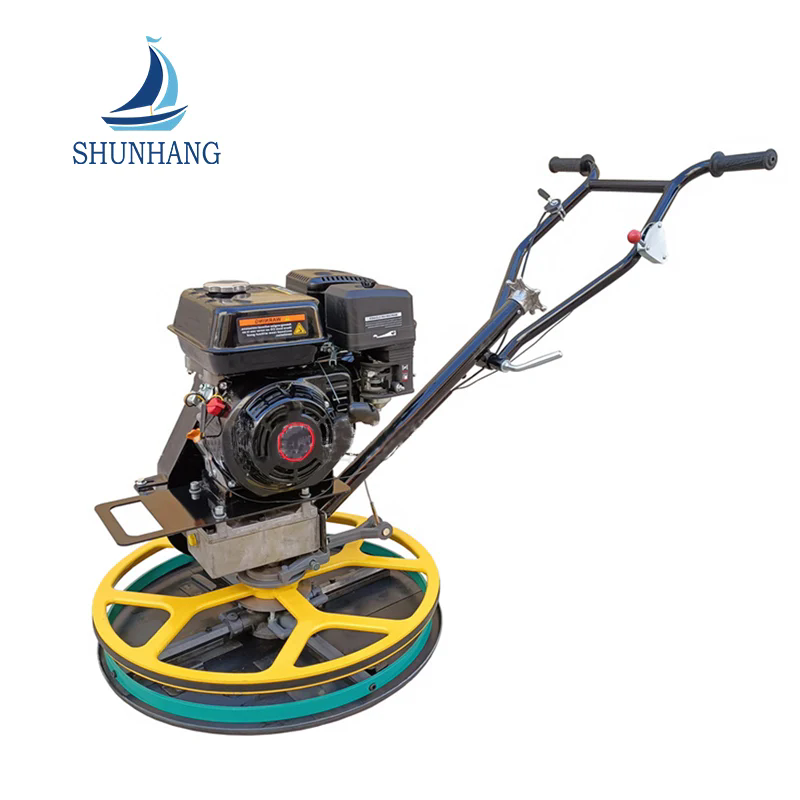Power Trowel: The Key to a Professional Concrete Finish
2025-04-29
In the world of concrete construction, achieving a flat, smooth, and durable surface is crucial. That’s where a power trowel comes into play. Also known as a power float or concrete helicopter, this machine has revolutionized the way concrete surfaces are finished, especially in large-scale projects.
Whether you're a contractor, builder, or DIYer looking to understand how to get that perfect concrete finish, this article breaks down everything you need to know about power trowels — how they work, their types, and the benefits they offer.

What is a Power Trowel?
A power trowel is a motorized piece of equipment used to smooth and finish concrete slabs. It features rotating blades housed in a circular safety cage and can be walk-behind or ride-on. This machine replaces the need for hand-troweling large surfaces, saving significant time and labor while providing a polished, professional look.
Power trowels are essential on construction sites for finishing floors, warehouses, driveways, and commercial spaces.
Types of Power Trowels
There are two main types of power trowels:
1. Walk-Behind Power Trowel
- The operator walks behind the machine and guides it using handles.
- Ideal for medium-sized jobs or areas with tight access.
- Offers excellent control for edging and detail work.
2. Ride-On Power Trowel
- The operator sits on the machine and drives it like a small vehicle.
- Best for large-scale concrete floors (e.g., warehouses or commercial buildings).
- Saves labor and increases efficiency.
Key Components
- Engine: Typically gasoline-powered, though electric and battery models exist.
- Blades: Float blades (for initial smoothing) or finish blades (for polishing).
- Spider Assembly: Holds the blades and allows for rotation and angle adjustment.
- Safety Ring: Prevents damage to walls and structures during operation.
- Pitch Control: Adjusts blade angle for different finishing stages.
How Does a Power Trowel Work?
After the concrete is poured and has begun to set — firm enough to support weight but still soft — the power trowel is used to:
1. Float: Flatten the surface and embed aggregates.
2. Finish: Create a hard, smooth surface through multiple passes, often with increasing blade pitch.
3. Polish (Optional): With pan attachments or specialized blades for high-gloss surfaces.
Timing is key — starting too early can ruin the surface, while starting too late makes smoothing difficult.
Benefits of Using a Power Trowel
Efficiency
Power trowels significantly speed up the finishing process, especially compared to manual troweling.
Consistent Quality
They provide a smooth, level finish across the entire concrete surface, minimizing human error.
Labor-Saving
Using a machine reduces the physical strain on workers and the need for multiple people on-site.
Versatility
With the right blades or pans, power trowels can handle everything from floating to polishing.
Applications
Power trowels are widely used in:
- Industrial and commercial flooring
- Parking garages
- Warehouses
- Sidewalks and patios
- Residential slabs and basements
Tips for Choosing the Right Power Trowel
1. Size of the Job: Ride-on for large jobs, walk-behind for smaller or confined spaces.
2. Blade Configuration: Ensure compatibility with float and finish blades.
3. Engine Power: More horsepower is better for heavy-duty tasks.
4. Ease of Maintenance: Look for machines with accessible parts and durable construction.
Safety Considerations
- Always wear protective gear.
- Be trained in handling the equipment.
- Make sure the concrete is at the correct curing stage before starting.
- Use both hands when operating and be mindful of blade spin.
Conclusion
The power trowel is an indispensable tool for anyone aiming to achieve a high-quality concrete finish. Whether you’re pouring a small garage slab or finishing a massive warehouse floor, this machine saves time, reduces labor, and delivers superior results. With the right model and technique, you’ll ensure your concrete projects look and perform their best.


